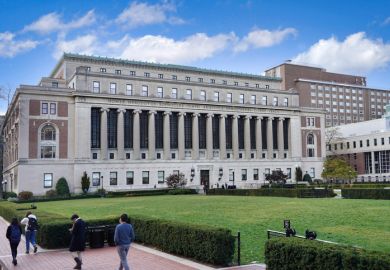The government’s new postgraduate loan scheme is to be welcomed. It fills gaps left by the 2010 reform of student funding and in successive governments’ higher skills strategies. It marks an important step in widening access to higher level programmes and employment opportunities. It brings potential benefits for the employer, for the state, and for the individual.
Employers need a larger workforce qualified to master’s level, and are willing to reflect this in salaries. Work by the Department for Business, Innovation and Skills and the Sutton Trust on the earnings premium (used in the Autumn Statement) shows that master’s graduates earn on average £200,000 more than first-degree graduates during their working lives, and that this premium is increasing.
The proportion of master’s graduates in the general population has more than tripled since 1996 and now stands at the same figure as first-degree graduates in 1974.
The future gain for the government is clear, with higher tax take, lower social costs, and the strong economic impact of a more highly-skilled labour market.
So what about the individual? It has long been the case that master’s graduates get the pick of jobs that are better paid and more interesting. So the new scheme – though the full detail has yet to be worked out – ought to be good news, even if as it appears it will entail concurrent repayment of the master’s loan.
And yet while many have responded positively to the scheme, some reactions bring to mind the old adage that no good turn goes unpunished. The IFS was quick to point out that concurrent repayment of the loan at 9 per cent of income over £21,000, alongside undergraduate repayment at the same rate equates to a 50 per cent marginal rate of tax.
But a first-degree graduate faces a 41 per cent marginal tax rate calculated on this basis (which includes 12 per cent national insurance), and the chances are that the additional repayments are likely to be more than offset by higher salaries.
A first-degree graduate earning £30,000 a year and a master’s graduate earning £31,000 would enjoy the same net sum, after tax, national insurance and loan repayments – and the average earnings premium for master’s graduates at this pay level is much larger than this.
Others have compared this scheme with initiatives to support part-time students that have failed to achieve their desired effect. Part-time undergraduate study, however, is a different market: a partly fished-out pool for older age-cohorts (there are fewer now who missed out first time around), and a less appealing proposition than full-time study in terms of outcomes and experience. Master’s study, by contrast, has been held back by a lack of access to finance – a reliance on ‘bank of mum and dad’ – and there is strong evidence, both from the funding council and local studies, of significant unmet demand across a wide range of institutions.
It is true that much remains to be settled in the consultation, including questions on devolution issues, means testing (assuming that “income contingent” in the BIS factsheet applies to eligibility and not to repayments), and age limits. Making the loan available for an unspecified combination of fees and maintenance does, however, mark an important distinction between this and the undergraduate scheme. On this basis, the risk of a flood of non-UK uptake may be limited, and since for most £10,000 is likely to constitute only part of the full cost, there is still plenty of scope for contributions from business, the individual or institutions. Those who are studying at less than 50 per cent intensity are probably in work, and it is not unreasonable for employers and individuals to make a contribution.
So how will institutions behave? If demand rises, prices may follow, so arguably the system needs to be tweaked to lower the contribution to those who have demonstrated they can already afford to go.
And then there is social mobility. Paul Wakeling, senior lecturer in the department of education at the University of York, has argued that the better off will be best placed to take out these loans, and he may be right, for all that the scheme is a massive step in the right direction. Foregone earnings and accumulated undergraduate debt may be part of their calculation. But I suspect the main gap for the financially underprivileged is likely to be in the shortfall on the full cost of study, and here there is a lot to be said about how institutions direct their access funding and work with employers to preserve opportunity for under-represented groups. We may also, of course, see more part-time master’s study – which is where part-time provision was always strongest – and more younger master’s students living at home.
Since the mid-1990s, the UK has worked with the prescription – articulated by the 1996 Harris Report, and right for its time – that master’s-level was the responsibility of the individual, with the state playing a role in first degrees and research degrees. But times have changed and the approach needs to follow suit. The country needs what master’s students bring, and it is right for the public purse to support that.
Register to continue
Why register?
- Registration is free and only takes a moment
- Once registered, you can read 3 articles a month
- Sign up for our newsletter
Subscribe
Or subscribe for unlimited access to:
- Unlimited access to news, views, insights & reviews
- Digital editions
- Digital access to THE’s university and college rankings analysis
Already registered or a current subscriber? Login




